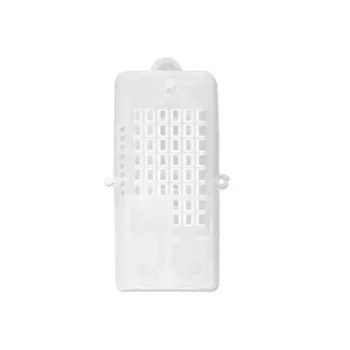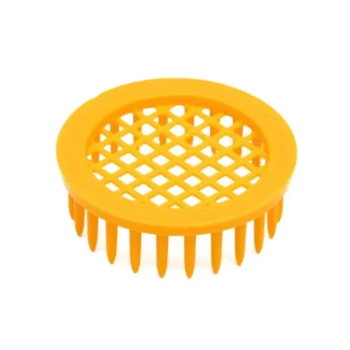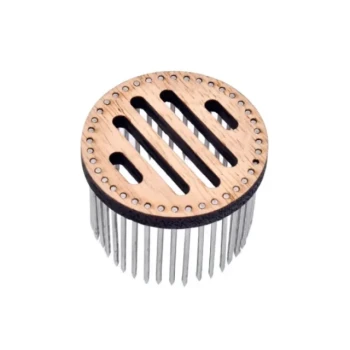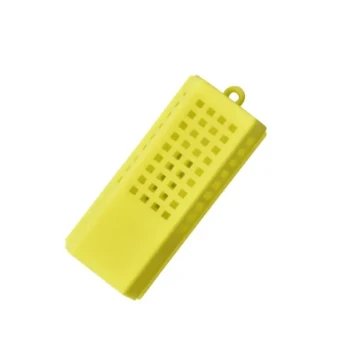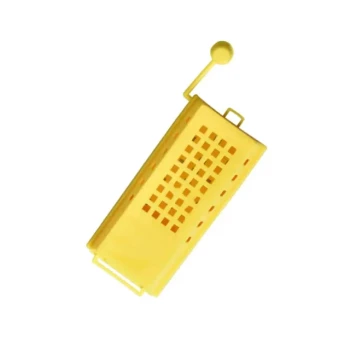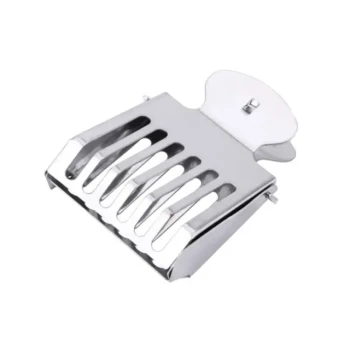At its core, banking queens without attendants is the recommended practice because it forces the bees in the host "bank" colony to directly care for the queen. This direct interaction through the cage mesh promotes faster acceptance by eliminating the pheromonal conflict that can arise from the visiting attendants, who carry the scent of a different colony.
The decision to remove attendant bees from a queen cage before banking is a trade-off. While removing them is the ideal method for promoting queen acceptance, it introduces a small but significant risk of injuring or losing the queen during the process.
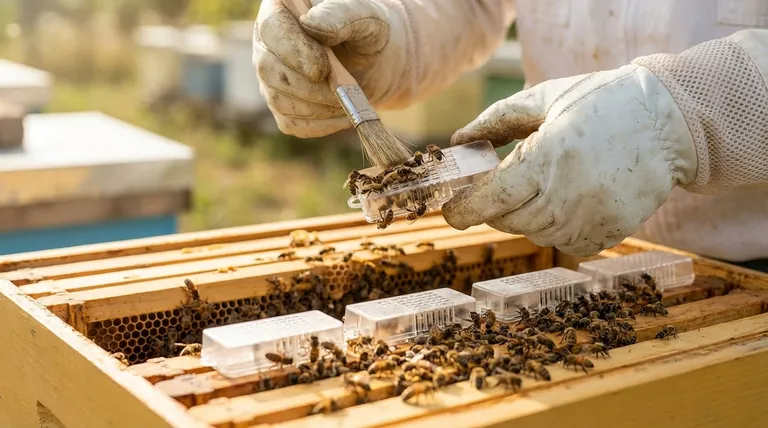
The Core Principle: Pheromonal Integration
To understand the recommendation, you must first understand the chemical language of the hive. A honey bee colony operates on a complex system of pheromones, with the queen's scent being the most important.
The Purpose of a Queen Bank
A queen bank is a strong, queenless colony used to temporarily store multiple caged queens. The goal is for the worker bees of this bank to keep the caged queens fed, warm, and healthy until they are needed.
Queen Mandibular Pheromone (QMP)
The primary signal of a queen's presence is her Queen Mandibular Pheromone (QMP). This scent profile is unique to her and signals to the colony that it has a viable, laying queen, which maintains social cohesion.
Why Attendants Can Cause Conflict
The attendant bees packaged with a queen come from her original mating nuc or colony. They carry the pheromonal signature of that colony, not the bank.
When placed in the bank, these attendants can create a "scent-based territorial dispute" on a micro scale. The bank's workers may perceive the attendants as foreign invaders guarding a foreign queen, leading to aggression at the cage and potentially slower acceptance and care.
The Goal: Direct Tending by the Bank
By removing the attendants, you eliminate this source of conflict. The bank's worker bees can immediately interact with the new queen through the cage screen, feeding and tending to her directly. This direct care is the fastest path to integrating her scent and ensuring her survival in the bank.
Understanding the Trade-offs
While removing attendants is the textbook ideal, practical considerations make it a nuanced decision. The risk is not in the hive, but in the hands of the beekeeper.
The Case for Removing Attendants
The primary benefit is optimal acceptance. By forcing the bank colony to take full responsibility for the queen's care, you create the best possible environment for her long-term health and successful introduction later.
This method minimizes pheromonal confusion and ensures the queen is being evaluated and cared for by the bees that will ultimately need to accept her or another queen from the bank.
The Case for Keeping Attendants
The main reason to leave attendants in the cage is risk mitigation. The process of removing them requires opening the cage, which can lead to two negative outcomes:
- Accidental Queen Release: The queen could fly away and be lost.
- Queen Injury: You could inadvertently damage a leg, wing, or antenna while trying to coax the attendants out.
The attendants are guaranteed to feed the queen. If you leave them in, you are prioritizing the certainty of her immediate care over the ideal conditions for long-term bank acceptance. In practice, many colonies will eventually accept and integrate the attendants anyway.
Making the Right Choice for Your Operation
Your decision should be based on your experience, your environment, and your tolerance for risk.
- If your primary focus is maximizing queen acceptance for breeding or large-scale requeening: Take the time to remove the attendants in a controlled indoor space where you cannot lose the queen.
- If your primary focus is risk aversion or you are new to handling queens: Leaving the attendants in the cage is a safer and perfectly viable option that reduces the chance of immediate loss.
Ultimately, understanding the pheromonal dynamics empowers you to make a deliberate choice that best aligns with your goals and skill level.
Summary Table:
| Practice | Key Benefit | Key Risk |
|---|---|---|
| Banking Without Attendants | Promotes direct care & faster acceptance by bank colony | Risk of queen injury or loss during removal process |
| Banking With Attendants | Guarantees immediate queen care, reduces handling risk | Slower acceptance due to pheromonal conflict from foreign bees |
Optimize Your Queen Banking Success with HONESTBEE
As a commercial apiary or beekeeping equipment distributor, ensuring the health and acceptance of your queens is critical for productivity and profitability. The right equipment and techniques make all the difference.
At HONESTBEE, we supply the durable, reliable beekeeping supplies and wholesale equipment you need to implement best practices with confidence. From secure queen cages to essential hive tools, our products are designed to support large-scale operations like yours.
Let's discuss how our wholesale-focused solutions can enhance your queen management system. Contact our team today to get the right equipment for your apiary's success.
Visual Guide

Related Products
- Professional Multi-Functional Queen Bee Cage
- Multi-Function Queen Roller Cage and Catcher
- Wood and Mesh Push-In Queen Cage
- Durable Galvanized Steel Spring Queen Bee Cage
- Professional Round Push-In Queen Cage with Metal Tines
People Also Ask
- What is sequestration, and how does it help bees reorient? A Safer Guide to Hive Relocation
- What should be done if bees damage the queen cage or harm the queen? Rescue Your Queen and Save Your Hive
- What are the components of a standard queen cage? A Guide to Safe Queen Introduction
- Why might bees reject a new queen? A Guide to Successful Queen Introduction
- What items are needed to place the queen bee's cage in the hive? A Guide to Successful Queen Introduction
